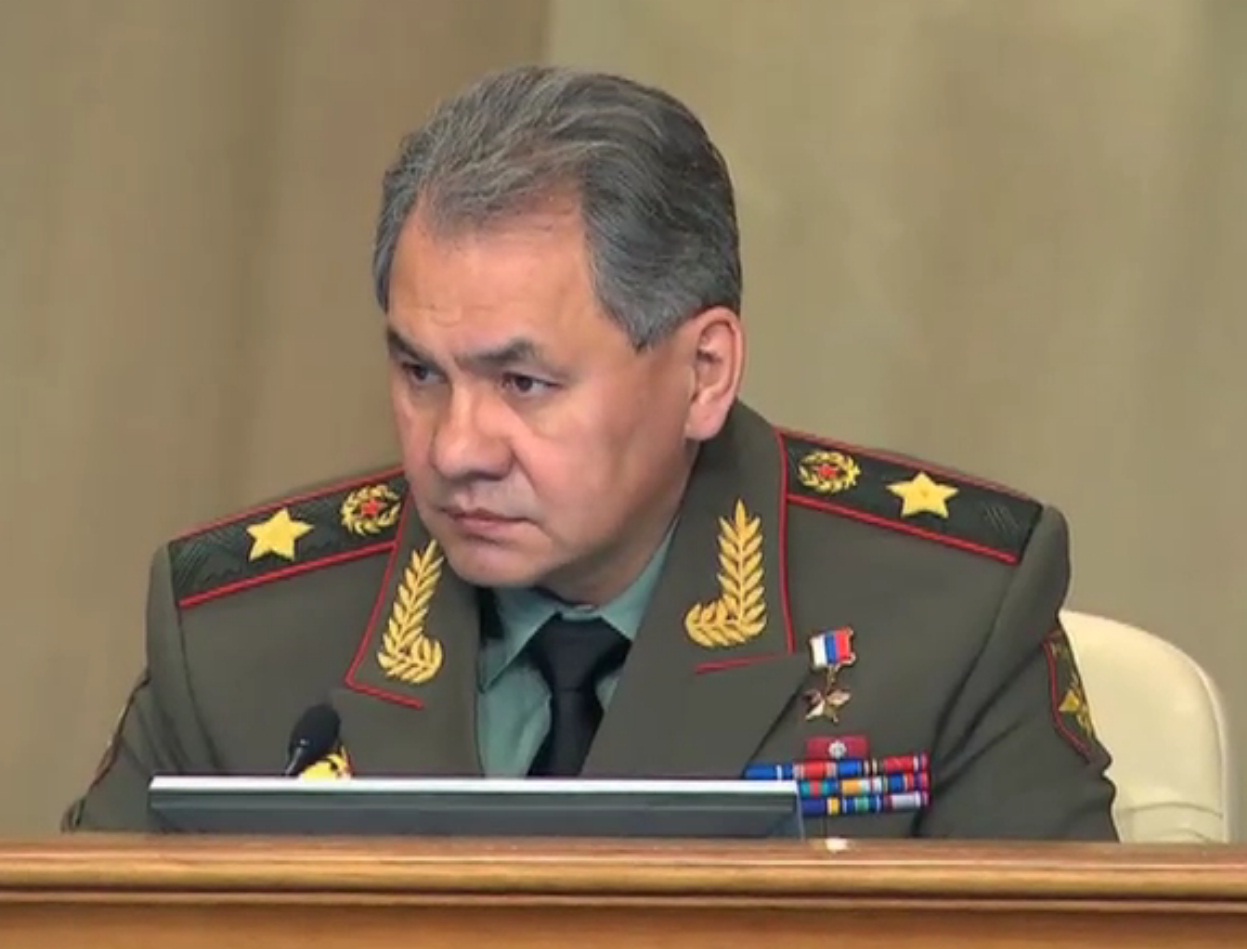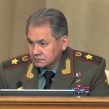
Shoigu Opts for Mystical Defense Plans (Part One)
Publication: Eurasia Daily Monitor Volume: 10 Issue: 193
By:

As the anniversary approaches in November 2013, marking one year since President Vladimir Putin sacked Anatoly Serdyukov and appointed Sergei Shoigu as Russia’s defense minister, evidence is mounting to indicate that the change may not herald better times for the military. Quite apart from Shoigu wearing shoulder boards or achieving more popularity with active servicemen than did his predecessor, a number of indicators show the negative impact of the new minister’s policies. These are linked to increased secrecy over defense expenditure, abandoning the efforts to civilianize the Armed Forces’ combat support service, hiking spending on so-called “snap inspections” of combat readiness, and maintaining a mysteriously large number of “dead souls” in order to promote voodoo defense economics (Nezavisimoye Voyennoye Obozreniye, October 18).
Indeed, Russian senior political and defense officials continue to try to bolster failing belief in the much vaunted rearmament program to 2020, while Deputy Prime Minister Dmitry Rogozin is apparently even keener to invest more time in preparing the new state armament program to 2025. Yet, shortages have nevertheless emerged for fuel and lubricants—in particular, the Army does not have enough funds for fuel and lubricants to maintain combat training levels. At the same time, government secrecy related to military spending has been multiplying. For example, unlike in 2012, the Duma Defense Committee could not cite the conclusion from this year’s draft budget for the figure on purchasing weapons. Military expenditure figures in the 2014 draft Federal Budget are even more thoroughly classified than in the 2013 draft.
Nonetheless, the committee’s comment on the draft 2014 Federal Budget contained previously unknown information. For instance, the total number of aircraft including helicopters in the military is disclosed as 1,607. However, Vladimir Komoyedov, the head of the Duma Defense Committee, also stated that spending on fuels and lubricants in the budget is insufficient; the planned level (57.9 billion rubles—$1.82 billion) will compel a reduction in the number of military exercises and result in lowering the annual flying hours of pilots from its current level of 100–120 hours—which will also have a similar impact on the Navy. Komoyedov said the figure must be increased to 69.1 billion rubles ($2.17 billion) (Vedomosti, October 8).
Interestingly part of this assessment was arrived at based upon an analysis of military exercises in 2013 and the introduction of Shoigu’s “snap inspections” of the Armed Forces. To maintain this approach requires “25,000 extra tons of fuel, because up to 200–300 tanks, 1,500–2,000 units of other armored tank and automobile vehicles, more than 100 aircraft, and up to 120 Navy ships and vessels are involved in [the snap inspections]. And the fulfillment of the president’s instructions to demonstrate a naval presence in the world’s seas and oceans requires the involvement of up to 76 ships and vessels and their presence at sea for a total of 5,000 hours, which demands another 43,000 tons of diesel fuel.” In this context, something seems bound to give way within the system. Konstantin Makiyenko, an expert with the Center for the Analysis of Strategies and Techniques in Moscow believes that priority should be on combat training and social expenditure. Hence, he sees weapons purchases as the likely area to save money (Vedomosti, October 8).
In fact, the credibility of these flaws in the planned level of defense expenditure were described in another article as “a catastrophic shortfall in funds for troop maintenance,” since the allocations are only sufficient for eight months of the year. This was contained in the Duma Defense Committee’s official conclusion on the draft federal law number 348,499 (“On the Federal Budget for 2014, and the plan period 2015 and 2016”), which involves cuts to the purchase of fuels and lubricants. Moreover, this is hardly an abstract point made in a “debate” over defense spending, but actually radically impacts on combat training, the training of reservists and also pares back housing purchases for military personnel (military mortgages are only half financed in the draft law) (https://www.ng.ru/armies/2013-10-10/1_army.html).
Komoyedov noted that “the structure of budget expenditures under the draft law does not take into account all the requirements of the laws and decisions of the country’s government regarding maintenance of the Armed Forces and the social protection of servicemen.” It offers no explanation on why the military budget was constructed in this way. The committee’s “conclusion” also observed that “the structure of the draft federal budget for 2014–2016 does not permit full analysis of the expenditures stipulated for a number of important actions related to the activities of the Armed Forces, including providing them with weaponry, military and special hardware, maintenance, logistics, and social security” (https://www.ng.ru/armies/2013-10-10/1_army.html).
Committee members noted as positive the allocation of significant funds for the “organization of combat training.” With more military exercises, combat training and snap inspection taking place, Duma legislators were puzzled by the reduction of more than 10 billion rubles ($313 million) on spending on fuels and lubricant. The committee concluded that “the defense ministry will be forced to reduce the amount of purchased petroleum products by 422,000 tons and reduce the number of military training activities by 20–30 percent, including flights by air crews by 20 percent, training of drivers of armored vehicles by 30 percent, training of drivers of motor vehicles by 25 percent, and the number of ships involved in exercises in the world’s oceans by 40 percent.” However, the committee did view positively the funds for the payment of monetary allowances to “almost” 50,000 contract servicemen due to be recruited next year. Yet, they were quite concerned about the absence of planning for the provision of housing and social and public services (42.8 billion rubles in 2014, and 39.2 billion rubles in 2015)—implying that future contract personnel recruits will look forward to living in the barracks (now called dormitories) (https://www.ng.ru/armies/2013-10-10/1_army.html).
Shoigu, naturally, responded to these assertions by providing the expected “all is well” message, even going as far as claiming that, in 2014, Russian military pilots and sailors will reach the same competence levels as the “leading world powers.” Shoigu asserted, “If someone thinks that we do not have kerosene, I want to calm down everyone—we have enough fuel. We have increased air travel for our crews quite considerably, as well as maneuvers for our sailors. This tendency will be enhanced in 2014, and we will reach the standards of the leading world armies in this regard.”




